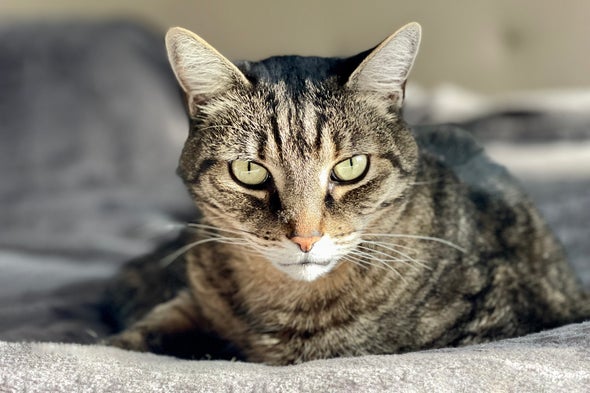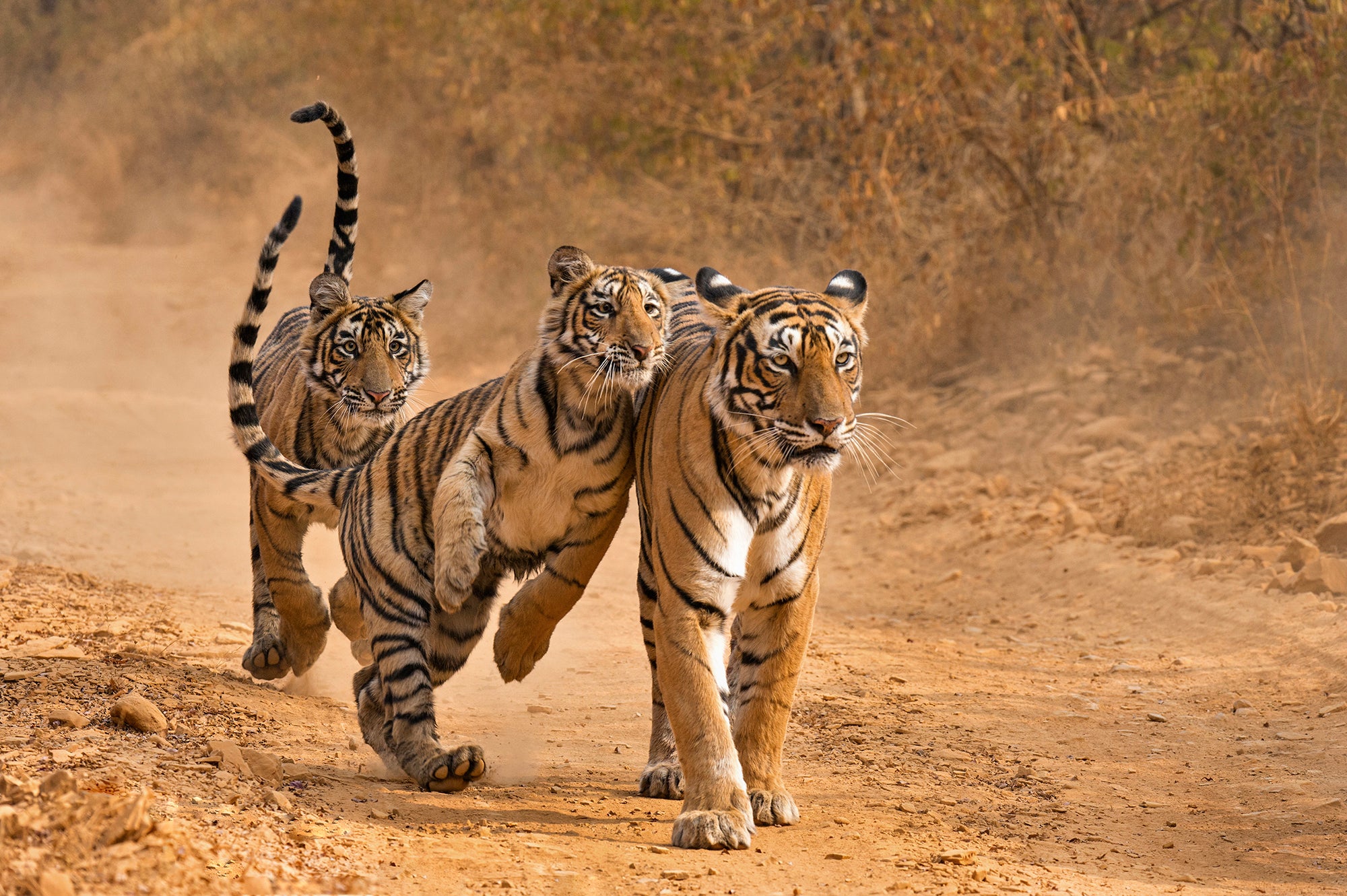Cats Are Perfect. An Evolutionary Biologist Explains Why
Length: • 6 mins
Annotated by howie.serious

Anjali Goswami thinks cats are perfect—not in the same way that the average cat person might admire their beauty, athleticism and independence of spirit but from a scientific standpoint. Goswami is an evolutionary biologist at the Natural History Museum in London who studies large-scale patterns of evolution in vertebrate animals through time. She contends that cats—from tabbies to tigers—are quintessential products of evolution. I sat down with her to find out why. Her explanation reveals cats, and the meaning of evolutionary success, in a fascinating new light.
[An edited transcript of the interview follows.]
When I first came across your argument about cats being perfect, my initial thought as a cat fan was “Well, of course they are. Science confirms the obvious.” But then I realized that this was a really interesting idea. How did it come about?
I was reading a book by Alex Dehgan called The Snow Leopard Project. In it, he mentioned that in this area in Afghanistan where he was setting up a national park, there are several cat species. I thought that was kind of amazing because ecologically, cats all do the same thing. They’re hard-core predators. They’re carnivores. And there are lots of other places around the world where there are multiple species of cats that coexist—not only today but also in deep time. The thing is, although there are lots of species, they all kind of look the same. They’re just big or small. I started thinking about how cats can be so similar.
Tell me more about how they’re similar. I’m thinking of all the breeds of domestic cat, and even within just that species, there seems to be a lot of variation.
They have different coat colors, sure. But they all have the same baby heads. They’re round, and they don’t elongate as the animal matures, which is the standard developmental pattern for mammals. Dogs have short, round faces as puppies but long, snouty faces as adults. An adult cat looks pretty much like a baby cat but bigger. With dogs, breeders play off of that developmental variation to create breeds with different face shapes. But because cats don’t have that developmental variation, there isn’t much to play around with other than coat color.
This all goes back to the fact that cats are extremely specialized. Every member of the order of mammals known as the carnivorans, including cats and dogs, has an upper fourth premolar and a lower first molar that form what we call the slicing pair, which slices meat. A lot of carnivorans retain molars behind the slicing pair that can grind up stuff such as vegetation. But cats have lost pretty much everything behind their slicing teeth. They might have a little nub, a peg tooth, but it can’t process stuff. This is why foxes are perfectly happy going through garbage, whereas leopards will kill livestock instead.
It doesn’t matter if they’re a tiny Bengal cat or a gigantic lion or tiger. They’re still gonna basically look the same. If you handed me a lion or tiger skull, I could not—as a person who’s a pretty solid expert in carnivorans in general—tell you which one it was. Most people would be hard-pressed to tell you. They look nearly identical. That’s how similar cats are. There’s a teeny amount of allometry [disproportionate change in one body part relative to the whole as a consequence of size] if they get really big: a small elongation of the face and an increase in muscle mass. But the variation is nothing compared with what you see in other groups, such as dogs. Ultimately big cats are really similar to small cats, far more so than you would predict.

What does this have to do with being perfect?
Cats have nailed this one thing so well that they all do it and just come up with slightly different sizes. That’s why they’re perfect, evolutionarily. They don’t need variation. They might get bigger or smaller, but they don’t change anything else because they’re doing it just right otherwise. They’re not jacks-of-all-trades; they’re masters of one.
Bears are the anticats. There are only a few species of bear, and they do different things. You’ve got your superspecialized, weird herbivore, the panda [which basically only eats bamboo]. And then you’ve got spectacled bears [which favor fruits and bromeliads]. You’ve got polar bears, which are hypercarnivorous marine mammals, and the omnivorous black bears and grizzlies. And then there are sloth bears, which mostly eat social insects. So almost every single species of bear does something totally different. And they’re just okay at all of it [laughs]. I really do like bears a lot because of that opposite side of things. They’re interesting because they’re so ecologically diverse.
People usually talk about a group’s diversity as a mark of success. But you’re saying it’s the sameness of cat species, their lack of variation, that indicates that they’re evolutionarily successful, or “perfect.”
Cats challenge standard biases in evolutionary biology. People have said to me, “What about bats? What about rodents? These groups have so many species doing all kinds of things.” And I’m like, “Yeah, because they suck.” They haven’t figured out how to do anything well, so they keep trying different things.
Do any other vertebrate groups measure up to cats in this way?
Monitor lizards are as awesome as cats. They are the cats of the reptile world. They vary hugely in body size—they have maybe an even bigger body size range than cats do—and they are all utterly identical. They’re also hard-core carnivores.
You and your colleagues have been studying skull evolution in a bunch of animals, and you recently published a paper on what you found in mammals. Did you discover anything interesting about cats in the course of that research?
We’ve been trying to measure skull shape in a similar way across all tetrapods (vertebrates with four limbs). We’re looking at salamanders and frogs, birds and crocodiles, dinosaurs and mammals and then trying to understand the variation that we see, the speed at which things evolve and the factors that are associated with how fast things evolve. Within mammals, specifically, being social or solitary affects how fast you evolve. Social mammals evolve faster. Cats are notoriously solitary, except for lions. And cats don’t evolve quickly. Compared with other groups, cats are slowly evolving animals.
There are lots of things that have tried to be cats—other groups of mammals that have evolutionarily converged on cats. Marsupials have tried to be cats. An extinct group of carnivorans called creodonts have tried to be cats. Weasels have tried to be cats. There’s all kinds of stuff that has tried to be a bit catlike in different ways—mongooses, things like that. But they kind of dip in and dip out of being cats, and they can’t really outcompete cats in their space. They haven’t lasted. All of those things that have tried to be cats, they do other things, too, and those things are fine. But there aren’t a lot of things that are around today that do a very good job of being a cat.
So cats are not only perfect but also inimitable.
You can’t just casually try to be a cat. You have to commit. Cats have committed to being cats. Everything else is just sort of dabbling, and it doesn’t work.
Kate Wong is an award-winning science writer and senior editor at Scientific American focused on evolution, ecology, anthropology, archaeology, paleontology and animal behavior. She is fascinated by human origins, which she has covered for more than 25 years. Recently she has become obsessed with birds. Her reporting has taken her to caves in France and Croatia that Neandertals once called home, to the shores of Kenya's Lake Turkana in search of the oldest stone tools in the world, to Madagascar on an expedition to unearth ancient mammals and dinosaurs, to the icy waters of Antarctica where humpback whales feast on krill, and on a "Big Day" race around the state of Connecticut to find as many bird species as possible in 24 hours. Kate is co-author, with Donald Johanson, of Lucy's Legacy: The Quest for Human Origins. She holds a bachelor of science degree in biological anthropology and zoology from the University of Michigan. Follow Kate Wong on Twitter Credit: Nick Higgins